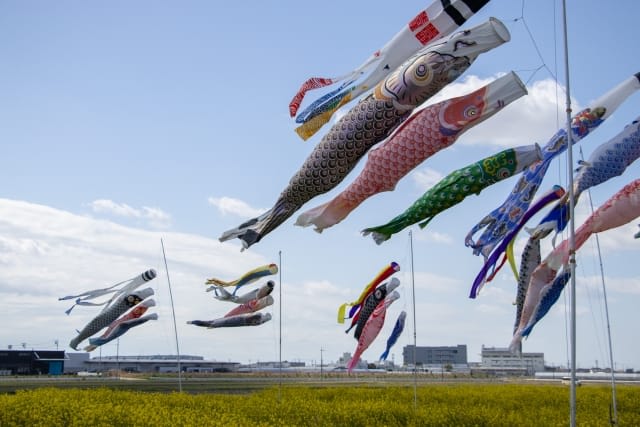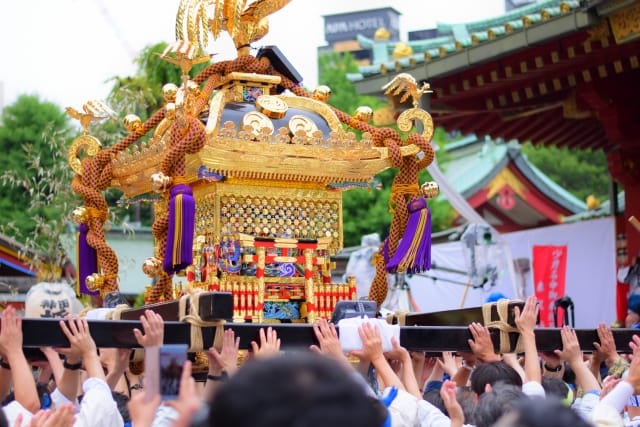5 Must-Visit Temples and Shrines in Hakone 2025
Hakone, known as a hot spring resort since the Edo period, is actually dotted with many fascinating temples and shrines.
While it's easily accessible as a day trip from Tokyo, the tourist-packed Hakone area can experience traffic congestion on weekends and holidays. Nevertheless, I find myself drawn back repeatedly because of the divine Hakone Shrine overlooking sacred Mount Fuji and the elegant atmosphere of Amida Temple with its hydrangeas blooming during the rainy season.
In this article, I, as a Hakone expert, will introduce five carefully selected temples and shrines. I'll share detailed information about each temple and shrine's unique charm, blessings, best seasons to visit, and address common questions that foreign visitors often have.
Throughout Japan, including Hakone, Magical Trip offers guided tours where you can explore local history, traditions, and food culture in depth with local guides.(Hakone Full Day Chartered Private Tour: Art & Nature)
Our most popular tour "Tokyo Bar Hopping Night Tour in Shinjuku" was ranked as Tripadvisor's #1 tour in 2024.

For tourists visiting Tokyo, why not try a private car tour that lets you efficiently visit multiple attractions in a single day? With expert guides who know all the best spots, you can fully experience the region's traditions and rich food culture even in just one day.
These tours include hotel pickup and drop-off service, allowing you to visit attractions stress-free and efficiently. If you're interested in nature-rich destinations like Hakone and want to explore Japan's history and traditions while avoiding crowds, these tours are perfect for you.
・Hakone Full Day Chartered Private Tour: Art & Nature
・Mt. Fuji Full-day Nature Guided Tour with a Private Chartered Car & Guide
Table of Contents
・Basic Information for Temple and Shrine Visits in Hakone
・5 Recommended Temples and Shrines in Hakone
・Etiquette and Guidelines for Visiting Hakone Temples and Shrines
・Frequently Asked Questions About Hakone Temples and Shrines
Basic Information for Temple and Shrine Visits in Hakone

Visiting temples and shrines in Hakone is the perfect way to experience the harmony between Japanese traditional culture and nature. In terms of access, you can reach Hakone-Yumoto Station in about 85 minutes from Tokyo Station using the Odakyu Romance Car.
Notably, the Hakone Free Pass offers great convenience. With this pass, you can enjoy unlimited rides on public transportation within the Hakone area, making it efficient to visit various temples and shrines.
I especially recommend visiting during cherry blossom season in spring or autumn foliage season. However, this is just a small part of Hakone's charm. The temples and shrines show different faces throughout the four seasons, making them worth visiting year-round.
The scenery created by hot springs, temples and shrines, and rich nature offers a special place to experience the essence of traditional Japanese landscapes.
Website: https://www.hakonenavi.jp/international/en/discount_passes/free_pass
5 Recommended Temples and Shrines in Hakone
Among the many temples and shrines scattered throughout Hakone, I'll introduce five that I find particularly captivating. I'll share the unique atmosphere and elements that enchant visitors at each location.
Hakone Shrine

Hakone Shrine stands solemnly on the quiet shores of Lake Ashi. Its vermillion grand torii gate serves as an iconic symbol that captures the hearts of many visitors.
I find the 90 stone steps surrounded by cedar trees over 600 years old particularly impressive. As you climb these steps, you're enveloped in a mystical atmosphere as if entering another world.
With over 1,000 years of history, this shrine is especially famous for its blessings in matchmaking. I recommend combining your visit with Kuzuryu Shrine. The view of the grand torii from Lake Ashi's sightseeing boats is spectacular and makes for an excellent photo opportunity.
Website: https://hakonejinja.or.jp/
Access: About 30 minutes by Hakone Tozan Bus (Route H or K) from Hakone-Yumoto Station, get off at "Hakone-jinja-iriguchi" bus stop, then 10 minutes on foot. *The "Hakone-jinja-iriguchi" bus stop is not serviced between 10:00 AM and 4:00 PM, so please use the next stop "Moto-Hakone Port" during these hours.
Kuzuryu Shrine Main Shrine

Kuzuryu Shrine Main Shrine, known as Hakone's premier power spot, is where I find particular peace of mind. As a shrine dedicated to the deity of matchmaking, it attracts many worshippers, and its divine atmosphere calms the hearts of visitors.
The main hall shows a majestic appearance, and its harmony with the surrounding nature embodies the beauty of Japanese shrine architecture. I always practice visiting this shrine in combination with Hakone Shrine. I feel that visiting both shrines provides a deeper spiritual experience.
Access: Take the Hakone Tozan Bus (Route T) from Hakone-Yumoto Station for about 41 minutes to "Togendai" bus stop, transfer to Odakyu Hakone Highway Bus (Route W bound for Hakone-en) for about 4 minutes to "Hakone-en" bus stop, then walk about 30 minutes.
Daiyuzan Saijoji Temple

Daiyuzan Saijoji Temple, a Soto Zen temple dating back to the 1300s, is one of the most majestic temples I've encountered in Hakone.
The temple gate, built in 2003, overwhelms visitors with its imposing presence. The grounds feature statues of Tengu, said to possess powerful supernatural abilities, creating a unique atmosphere.
I especially recommend visiting from early June to early July during hydrangea season. The autumn foliage in early winter is also spectacular, with the entire temple grounds transformed into blazing reds and yellows. Just walking through the quiet grounds gives me a sense of spiritual cleansing.
Website: https://www.daiyuuzan.or.jp/english/
Access: Take the Izuhakone Railway Daiyuzan Line from Odawara Station to "Daiyuzan Station," then take the Hakone Tozan Bus for about 10 minutes and get off at "Doryoson."
Amida Temple
Source: Google Map
Amida Temple, affectionately known as the Hydrangea Temple, is a historic temple established in the 1600s.
I look forward every year to the hydrangea season from mid to late June. The sight of over 4,000 hydrangea plants in full bloom is breathtaking, especially the approach to the main hall, which creates a fantastical space like a tunnel of hydrangeas.
From winter to spring, the blooming camellias are another highlight. The red camellia flowers blooming in the quiet temple grounds show perfect harmony with the temple's solemn atmosphere.
Website: https://www.hakonenavi.jp/spot/1153
Access: Take the Hakone Tozan Line (bound for Gora) from Hakone-Yumoto Station for about 4 minutes to "Tonosawa Station," then walk about 20 minutes.
Choanji Temple

Choanji Temple, established in the 1300s, is a temple where I particularly recommend visiting at dusk.
The group of stone Buddha statues known as the Five Hundred Rakan is the temple's main attraction. These stone Buddhas, while weathered by time, display unique expressions that capture visitors' hearts.
The garden's seasonal changes are also attractive. I find the temple grounds particularly impressive at dusk. The stone Buddhas illuminated by the setting sun create a mystical atmosphere, creating a serene space as if time has stopped.
Website: https://www.hakonenavi.jp/spot/1222
Access: Take the Hakone Tozan Bus (Route T) from Hakone-Yumoto Station for about 24 minutes and get off at "Sengoku" bus stop; the temple is right there.
Etiquette and Guidelines for Visiting Hakone Temples and Shrines

When visiting Japanese temples and shrines, it's important to observe several basic manners.
I particularly want to tell foreign visitors about the proper way to pass through torii gates. A torii gate marks the boundary between the sacred and secular worlds, and I recommend giving a slight bow when passing through.
The correct way to purify oneself at the chozuya (water pavilion) is also an important ritual. Hold the ladle with your right hand, purify your left hand first, then your right hand, and finally rinse your mouth (actually, you should not take the water into your mouth but rather simulate rinsing using water received in your left hand).
At shrines, the proper way to worship at the main hall is also important. Follow the order of two bows, two claps, and one bow. First bow twice, then clap twice, and finally bow once. These gestures are important acts showing respect for Japanese traditional culture.
Frequently Asked Questions About Hakone Temples and Shrines
Drawing from my experience, I'll explain in detail the common questions foreign visitors ask about Hakone's temples and shrines.
What's the Difference Between Temples and Shrines?
Temples and shrines are important religious facilities in Japan. Shrines are Shinto facilities where Japanese native deities are enshrined. On the other hand, temples are Buddhist facilities where Buddha is enshrined.
The easiest way to tell them apart is by their entrances. Shrines always have torii gates, while temples have temple gates. The worship method also differs - at shrines, you perform two bows, two claps, and one bow at the worship hall, while at temples, you pray with your hands clasped together at the main hall.
The architectural styles also differ significantly. Shrines feature traditional styles like Shinmei-zukuri and Taisha-zukuri, characterized by simple beauty using natural wood. Temples feature grand and powerful Chinese-influenced styles.
What's the Best Month to Visit Hakone Temples and Shrines?
From my experience, I especially recommend November for autumn leaves and June for hydrangeas.
In November, the contrast between vermillion buildings and autumn leaves is spectacular, particularly at Hakone Shrine. In June, you can enjoy beautiful hydrangeas at Amida Temple and Daiyuzan Saijoji Temple.
Late March to April during cherry blossom season is also attractive. Cherry blossoms along the approaching paths add elegance to the solemn atmosphere of temples and shrines.
The New Year period is bustling with "Hatsumode" (first shrine visit of the year), offering a special time to experience traditional Japanese New Year celebrations.
Is a Day Trip from Tokyo Possible?
A comfortable day trip is definitely possible. I recommend using the Odakyu Romance Car. With just about 85 minutes from Tokyo Station to Hakone-Yumoto Station, if you depart in the morning, you'll have plenty of time to visit the major temples and shrines.
The Hakone Free Pass is particularly convenient. Although it's available for 2-day use, it's still worth it even for a day trip. With unlimited rides on public transportation in the Hakone area, you can tour efficiently. If you finish sightseeing by around 6:00 PM, you can return to Tokyo with plenty of time to spare in the evening.
Hakone's temples and shrines are precious spots where you can experience the harmony between Japanese traditional culture and nature. Just as I discover something new every time I visit, they show different faces depending on the season and time of day. The peace of mind you feel in their solemn atmosphere is an experience hard to find in modern society.
The five temples and shrines introduced in this article each have their own unique charm, embodying the deep spirituality and culture of Hakone. With easy access from Tokyo, they offer a valuable opportunity to experience Japanese traditional culture, and I strongly encourage you to visit them.




